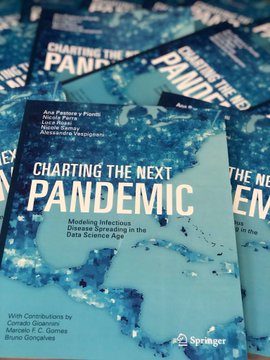Modeling Infectious Disease Spreading in the Data Science Age
This book was published last year and is a reference for pandemic modeling and in one chapter says:
In the case of coronaviruses, we selected scenarios referring to a case with a transmission rate and natural history of the disease similar to the SARS virus. Thus we assume that the infectiousness of individuals starts only after the onset of clinical symptoms, and we consider the absence of asymptomatic infections. Although we take into account a relatively high reproduction number R0=2.7, the absence of asymptomatic transmission makes all containment measures based on the timely isolation of cases viable and very effective. We therefore consider, for each possible initial condition of the outbreak, two scenarios with a transmissibility reduction, due to prompt case isolation, of 30% and 50% after the first 4 weeks and 50% and 90% after the seventh week, respectively.STARTING CONDITIONS
Contrary to influenza, we do not consider seasonal variations because seasonal forcing does not appear to have a large impact on SARS. For this reason, we consider only one starting date during the calendar year for each geographical location. In total we provide six scenarios summarized in the infographic charts. The typical coronavirus chart layout and the “how to read it” guide can be found on the following pages.
• R0 = 2.7
• Starting date: varies by geographical location
SCENARIOS
Reduction of transmissibility:
• 30% after 4 weeks; 50% after 7 weeks
• 50% after 4 weeks, 90% after 7 weeks
Origin:
Barcelona, Spain
15 million
passengers/year
Guangzhou, China
Jeddah,
Saudi Arabia
21 million
passengers/year
You may find a recent example of its application in this Science article.
There is only one minor thing that the model can't consider. It is the politicans' and citizens decisions:
Different strategies in a globalized world are the seed of caos beyond the pandemic. Nowadays, this is the current situation. However, as this blogs explains:
There is not a single “one-size-fits-all” approach that allows to respond effectively to the ongoing and rapidly evolving situation. Each country needs to tailor its response in accordance with the capacities of its health systems, its economic resources and infrastructure, and the degree of collective and individual responsibility and compliance with recommendations issued by the authorities. The next generation of health professionals will look back at the different responses to COVID-19 described above and hopefully draw lessons for future infectious disease epidemics.Meanwhile modeling provides little help.

